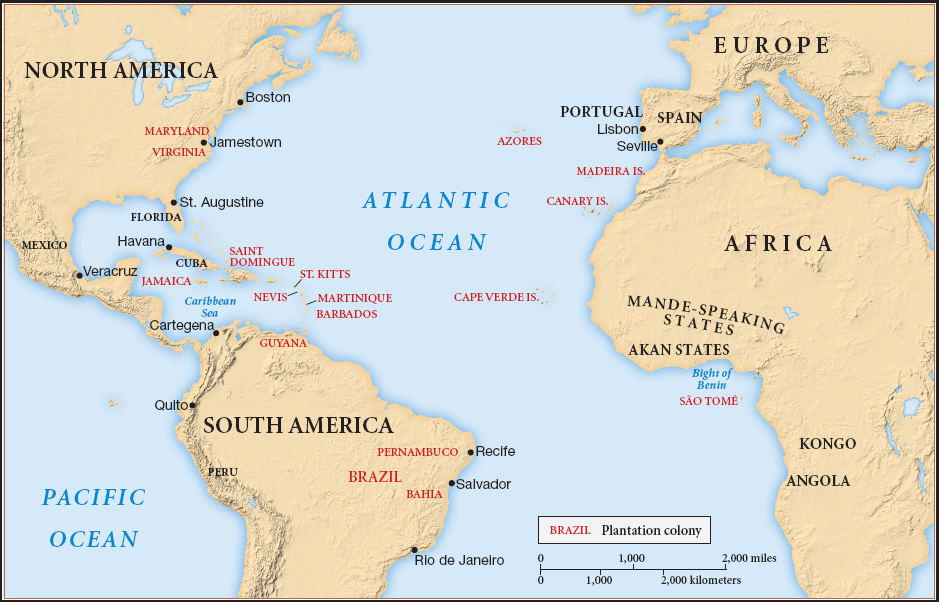Plantation Colonies
As Spain hammered out its American empire and struggled against its Protestant rivals, Portugal, England, France, and the Netherlands created successful plantation settlements in Brazil, Jamestown, Maryland, and the Caribbean islands (Map 2.2). Worldwide demand for sugar and tobacco fuelled the growth of these new colonies, and the resulting influx of colonists diminished Spain’s dominance in the New World. At the same time, they imposed dramatic new pressures on native populations, who scrambled, in turn, to survive the present and carve out pathways to the future.

MAP 2.2 The Plantation Colonies
The plantation zone in the Americas extended from the tropical coast of Brazil northwestward through the West Indies and into the tropical and subtropical lowlands of southeastern North America. Sugar was the most important plantation crop in the Americas, but where the soil or climate could not support it planters experimented with a wide variety of other possibilities, including tobacco, indigo, cotton, cacao, and rice.